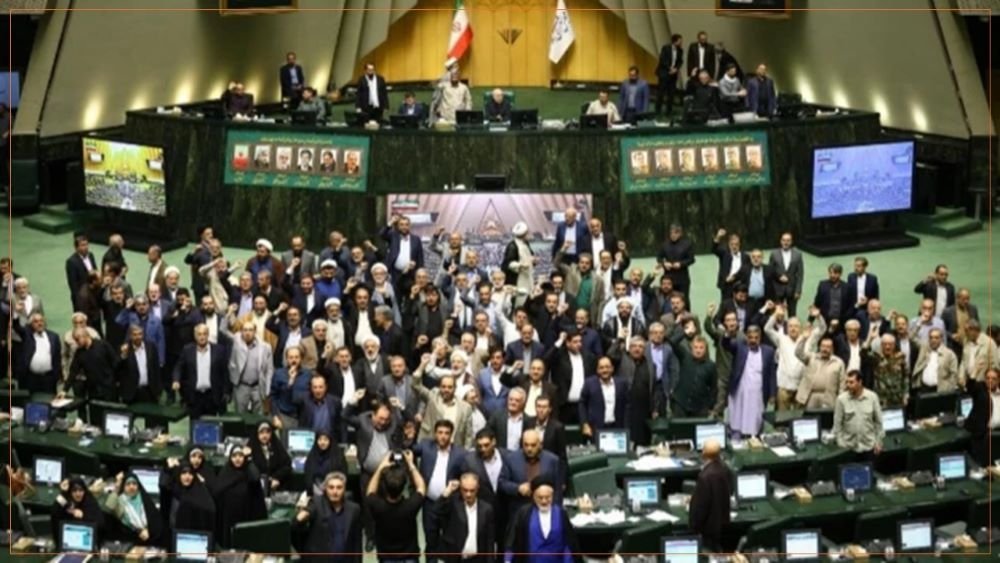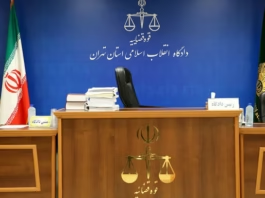Introduction
Espionage has always been considered one of the most sensitive security crimes, and the legislator of the Islamic Republic of Iran has provided severe penalties for it in various laws, including the Islamic Penal Code (Ta’zir section), the Penal Code for the Armed Forces, and the Computer Crime Law. However, the passage of the “Law on the Intensification of Punishment for Espionage and Cooperation with the Zionist Regime and Hostile States” in Mehr 1404 (September/October 2025) indicates a trend that focuses more on the severity and symbolism of punishments than on effectiveness and genuine prevention. The death penalty and the confiscation of all assets, without sufficient consideration of the principles of individualization of penalties and without distinction between different levels of participation, not only endanger criminal justice but also create room for political abuse and the restriction of citizens’ legitimate freedoms. The fundamental question is whether such a law represented a legal and criminological necessity or was merely an instrument for implementing a harsh, security-oriented penal policy.
a) Criminological Definition of Espionage
In criminology, “espionage” is defined as a social and behavioral phenomenon, not solely based on legal texts. The criminologist investigates what motives (financial, ideological, vengeful, etc.) underlie espionage. What social, political, and psychological frameworks facilitate it? What consequences does it have for national security, social capital, or international relations? Should it always be viewed as a criminal offense, or can it sometimes be a political action or even social resistance? Therefore, the criminological definition goes beyond the “law” and deals with the why, the how, and the social consequences of the action. From a criminological perspective, espionage is thus not simply a “violation of criminal law” but a socio-political action in which an individual or group, exploiting their position or abilities, secretly collects, transmits, or discloses sensitive and confidential information in such a way that this action can influence the balance of power, national security, or international relations.
In this definition, the main characteristic is covert and organized behavior, and the goals can be financial (economic espionage), ideological, political, or vengeful; the consequences can be a threat to national security, social distrust, or a disruption of the political order. From a criminological point of view, espionage is not just a “criminal act” but a product of social, psychological, and political-international structures.
b) Legal Definition of Espionage
The legislator of the Islamic Republic of Iran has outlined the crime of espionage in various laws through examples, some of which are listed below:
1. Islamic Penal Code, Ta’zir Section, adopted 1375 (1996/97) and subsequent amendments:
Chapter One of Book Five on crimes against the internal and external security of the country cites in Articles 501 to 510 some examples of espionage and cooperation with hostile foreign governments. Thus, Article 501 stipulates: “Anyone who makes plans, secrets, or decisions available to a foreign government in return for payment or property or in any other way… shall be sentenced to imprisonment from one to ten years.” This article is the main definition of “espionage” in favor of a foreign government. Article 502 refers to espionage within the territory of Iran in favor of one foreign government and to the detriment of another foreign government. Likewise, “anyone who, with the aim of disrupting the security of the country or assisting the enemy, collects classified or confidential information… shall be sentenced to imprisonment from two to ten years (Article 505).” And “any person or group that cooperates in any way with hostile foreign governments against the Islamic Republic of Iran… shall be punished with imprisonment from one to ten years (Article 508).” The philosophy of the strict legislator in setting heavy penalties in these articles appears to be guaranteeing the internal and external security of the country.
2. Penal Code for the Armed Forces, adopted 1382 (2003/04) and subsequent amendments:
The legislator has specified in Article 12 of this law examples of spies and provided for, depending on the case, long prison sentences or the punishment for Moharebeh (waging war against God). This section applies to the armed forces and is stricter. Considering the punishment for Moharebeh, the most severe of which is the death penalty, the equation of the severity of the actions specified in this regulation with the crime of Moharebeh is clearly visible; the decision on the type of punishment is at the discretion of the judge (Articles 282 and 283 of the Islamic Penal Code).
3. Computer Crime Law, adopted 1388 (2009/10):
In this law, the legislator has not directly defined “espionage,” but in Section 3, Articles 3 to 5, it has criminalized examples such as unauthorized access to secret and confidential data, unauthorized interception, and cyber attacks on critical systems, which have the character of electronic espionage. In Note 1 of this article, secret data is defined as data whose disclosure harms the security of the country or national interests. Note 2 stipulates that the development of a regulation for determining and identifying secret data and their classification and protection shall be carried out by the Ministry of Intelligence in cooperation with the Ministries of Justice, Interior, Communications and Information Technology, and Defense and Support of the Armed Forces, and then approved by the Council of Ministers. Likewise, in the note to Article 4 of the “Law on the Intensification of Punishment for Espionage and Cooperation with the Zionist Regime and Hostile States against Security and National Interests,” the task of determining examples, networks, media persons, and hostile social media pages was assigned to the Ministry of Intelligence, which must update them at least every six months.
In view of the above, when summarizing these two definitions, it can be concluded that the definitions mentioned in the aforementioned laws are not a criminological definition, but rather legal and statutory definitions. To arrive at a criminological definition, one must refer to theoretical analyses and research by criminologists (e.g., on espionage as a political or security crime, its connection to class, identity, or international motives). For the law merely states: If you give information to the enemy, you will be punished. But criminology asks: “Why does a person do this? What framework conditions cause this behavior? What social and political effects does this behavior have? Should the answer always be criminal, or are there other ways?” Accordingly, Article 501 of the Islamic Penal Code, Ta’zir section, is a legal definition of a spy and is the main basis for the crime of espionage in Iran. Alongside it, the Penal Code for the Armed Forces applies to military personnel and the Computer Crime Law applies to cyber espionage.
c) Criminal Offenses and Penalties Applicable to the Crime of Espionage
The legislator in the Islamic Penal Code of 1392 (2013/14) in Article 279, after defining Moharebeh, established four punishments for it, one of which is the death penalty (Articles 282 and 283). On the other hand, in Article 12 of the Penal Code for the Armed Forces of 1382 (2003/04), he provided for the punishment of Moharebeh for a spy. In Article 286 of the Islamic Penal Code of 1392 (2013/14), when listing examples in the text of this article, “crimes against the internal or external security of the country” are listed, a topic that is structured in chapters in Articles 498 to 512 under this title, with espionage and the spy themselves being defined in this chapter and in Article 501 of the same law; whereas under Article 286, the perpetrator is considered Mofsed-e fel-Arz (corrupter on earth) and sentenced to death. The same applies to the death penalty for a rebellious person who rises up armed against the foundations of the system of the Islamic Republic of Iran. In all the cases mentioned, actions against internal or external security and the death penalty can be cited as common features of these laws, so the adoption of a new law apparently was not necessary. Asset confiscation is also a new penalty that has been added to the previous penalties and applies to a wide range of behaviors, from transmitting information to technological cooperation and the use of satellite-based tools – a very dangerous approach.
d) Examination of Some Articles of the New Law of 06.07.1404 (28.09.2025)
In Article 1 of this law, the legislator has stipulated: “Any kind of operational measures for the Zionist regime or hostile states, including the government of the United States of America, with other hostile regimes and groups or for any of their affiliated actors, which are contrary to the security of the country, shall result in the confiscation of all assets in compliance with the last part of Note (5) of Article (19) of the Islamic Penal Code adopted on 01.02.1392 (21.04.2013) with subsequent amendments and additions and the death penalty.” Likewise, “any kind of intelligence or espionage activity for the said regimes, states, and groups or any of their affiliated actors shall result in the confiscation of all assets in compliance with the last part of Note (5) of Article (19) of the Islamic Penal Code and the death penalty.”
In Article 2 of this law: “Any kind of security, military, economic, financial, technological measures or any direct or indirect assistance, if it leads to the strengthening, consolidation, or legitimization of the Zionist regime, the perpetrator shall be sentenced to confiscation of all assets in compliance with the last part of Note (5) of Article (19) of the Islamic Penal Code and the death penalty; otherwise, the perpetrators shall be sentenced to Ta’zir imprisonment of degrees two to four depending on the harmful consequences of the crime.”
Likewise, it states in Article 3: “Any kind of cooperation and assistance in carrying out the following with the intention of cooperating with the Zionist regime or hostile states or other hostile regimes and groups shall be punished with the confiscation of all assets in compliance with the last part of Note (5) of Article (19) of the Islamic Penal Code and the death penalty:
a) Manufacture, connecting parts (assembly), supply, transfer, any kind of transaction, transport, storage, import into the country, deployment, or any kind of use of any kind of conventional or unconventional weapons, including chemical, microbiological, nuclear, any kind of firearm – traditional or modern, in any way that has the capability to kill, destroy, or create terror, or their parts and components … and other clauses of the same kind are subject to the penalty stated in the introductory paragraph of the article.”
e) Most Important Legal and Practical Deficiencies
- Ambiguity of Key Definitions: Definitions such as “contrary to national security” and “hostile” themselves violate legal certainty. Also, the phrase “hostile networks” remains very general and vague; this leads to unpredictable uncertainty for citizens and officials and leaves judicial assessment overly to executive-judicial discretion. Since the determination of examples of “hostile” is delegated to executive bodies without judicial or parliamentary procedures, there is a risk of abuse and informational or political suffocation, as well as the problem of mixing of powers and lack of a guarantee of independence in determining examples.
- Conflict with the Existing Penal System and Allocation of Jurisdiction: Does this law apply only to civilians or also to military personnel? Who is put on trial? If the new law does not set limits and a replacement for the “Penal Code for the Armed Forces,” conflicts of jurisdiction and inconsistency in the procedure of public and military courts will occur.
- Proportionality and the Principle of Relativity of Punishment: In principle, criminology as well as international and national legal foundations emphasize the necessity of proportionality between crime and punishment. This law covers a very broad range with the most severe penalty (death penalty and asset confiscation) – from transmitting a film to providing technology. This kind of accumulation of severity violates the logic of proportionality and can subject non-violent cases or errors in information transmission to heavy penalties.
- Lack of Objective Criteria for Intent and Result: In many cases, for example, “direct and indirect assistance” is criminalized without specifying the level of intent and without requiring the existence of an “effective role in causing actual damage.” Criminology and criminal law emphasize that there must be a clear causal connection between the accused’s action and the damage to security. This standard has not been clearly established.
- Restriction of Defense Rights and the Trial Process: The reduction of all deadlines to “5 days” (service, appeal, etc.), the “unappealable” pre-trial detention, and the “finality of all judgments except in death penalty cases” weaken the right to appeal and judicial supervision. These structures increase the risk of violation of defense rights (a foundation of a fair trial), long detention without effective access to defense, and judicial errors.
- Issues of International Law and Human Rights: The imposition of the death penalty in cases for which Ta’zir penalties are currently provided in domestic law, and especially for non-violent behavior or information transmission, can conflict with human rights standards and international custom regarding the application of the death penalty (which is usually limited to very violent and exceptional crimes).
- Conflict or Lack of Coordination with Existing Regulations in the Field of Communications: (e.g., private use of Starlink) The criminalization of the private use of satellite-based tools (complete prohibition of Starlink for individuals) without creating a legal path for issuing a “permit” or clear security criteria leads to conflicts with everyday communication needs, technological limitations, and operational problems (e.g., for emergency relief, business). This means a disregard for fourth-generation human rights.
- Application of Asset Confiscation Without Clear Judicial Guarantees: Extensive confiscation and its combination with the death penalty, without specifying the mechanism for proving the origin of the assets, the procedure for recovery, or securing the rights of third parties (such as the family of the accused) can violate the principle of property and legal immunity.
- Executive Deficiencies, Informational and Operational Shortcomings of Security Apparatuses, and Unclear Standards for Complex Informational Evidence: In informational cases, the evidence is usually classified and the evidence is technical and complex; the new law must establish the procedure for handling secret evidence, the possibility of a secret defense (session with a trusted judge), and the manner of handling classified documents.
- Lack of a Parliamentary-Judicial Oversight Mechanism for Security Policy Decisions: When the Ministry of Intelligence and the Supreme National Security Council have extensive powers to determine “hostile” and “adversarial,” there is a need for independent judicial or parliamentary review bodies.
- Lack of Elucidation of Supportive Policies for Legal Whistleblowers: The law does not distinguish between legal disclosure to prevent corruption and crime and “cooperation with the enemy”; there must be exceptions for appropriate disclosures and protective measures for whistleblowers.
f) Analysis with a Criminological Approach; Necessity or Unnecessity:
- Reasons in Line with the Necessity of Some Legislative Measures: The protection of classified information, critical infrastructures, and the prevention of strategic cooperation with foreign enemies are necessary for national security; strengthening legal mechanisms can prevent organized infiltration or open betrayal; there is a need for strong legal instruments for cases that seriously harm national security.
- Strong Reasons Against the Introduction of Such Extensive and Severe Penalties:
- Limited Deterrent Effect for Informational Espionage Crimes: Evidence shows that informational crimes are often committed by networks and complex motives (money, ideology, coercion); a mere increase in penalty severity (death penalty for a broad spectrum of behaviors) alone is not a positive solution strategy and can lead to more secrecy and complexity in uncovering crimes instead of prevention.
- Danger of “Closing Off” Society and Weakening Social Capital: The broad criminalization of communication (transmitting films or information) can weaken the space for media freedom and public trust; a society that has no possibility for reporting and criticism becomes more vulnerable in the long term.
- Danger of Politicization of Criminalization: Vague concepts of national security could be used to suppress political opponents, journalists, lawyers, and civil and human rights activists. This would be the opposite of the declared goal of the law (safeguarding national security).
- Serious Impairment of the Efficiency of Intelligence Services and the Judiciary: Dealing with complex informational crimes requires technical capacities, specialized interrogation procedures, international cooperation, and the protection of human sources; mere and strict punishment instead of strengthening technical and intelligence mechanisms will fundamentally not be fruitful.
Conclusion
Targeted and proportionate legislation means that crimes with actual and direct impacts on national security and critical infrastructures should be punished more severely, but legal instruments should not be used to punish information sharing or low-risk cases. Many crimes that were previously punishable by imprisonment (e.g., transmitting information or films, using specific communication technologies, indirect assistance) are now faced with the death penalty and asset confiscation under the new law. Asset confiscation has been added as a comprehensive ancillary punishment, whereas in the current laws it exists only in specific cases of Efsad-e fel-Arz or drugs. The right way is to move from “general and strict” legislation to “precise, criteria-based, and judicially guaranteed legislation.” This law is often extreme, indeterminate, and risky. By combining a very broad spectrum of behaviors under the penalty of “death penalty and asset confiscation” and by significantly reducing the guarantees for a fair and just procedure, the likelihood of political abuse, suppression of legitimate media freedom, and violation of fundamental rights, including the right to life, increases. In the existing Iranian laws (Islamic Penal Code, Penal Code for the Armed Forces, Computer Crime Law), almost all behaviors targeted by the new law are already criminalized. The new law has more the function of “intensification and consolidation” and has added cases like new technologies (Starlink, micro-drones, cryptocurrencies). The real necessity could have been limited to “updating the laws in the field of technology and cybersecurity and drones”; but this law has gone further and, through excessive intensification of penalties, ambiguities in concepts, and restrictions of the trial procedure, has created serious legal and criminological problems. From a criminological perspective, this law is more symbolic and punitive than preventive, and the danger of its ineffectiveness or even abuse is great.
The right to life is the first fundamental right and has been granted to humanity as a divine entrusted asset – a right that is established in many global and international human rights documents, including:
- Article 3 of the Universal Declaration of Human Rights of 1948: “Everyone has the right to life, liberty and security of person.”
- Article 6 of the International Covenant on Civil and Political Rights of 1966: “Every human being has the inherent right to life. This right shall be protected by law. No one shall be arbitrarily deprived of his life.”
At the regional level, Article 2 of the European Convention on Human Rights of 1950 and Article 4 of the American Convention on Human Rights of 1969 have addressed the protection of the right to life and have provided for the possibility of deprivation of life only under exceptional circumstances and under strict conditions, such as the execution of a final judgment by a competent court. Furthermore, Article 6 of the Convention on the Rights of the Child of 1989 points to and emphasizes this. Therefore, this right should not be judged lightly, for the existence and structure of every society are built on the principles of human rights, and the people, as the main capital of every government and political structure, are the bearers of this right. If the bearer of the right easily becomes the target of the death penalty, no capital will remain for this society.
Dr. Majid Motalebi
Attorney at Law – Member of the Iranian Bar Association
Doctorate in Criminal Law and Criminology
15/07/1404 (06.10.2025)




